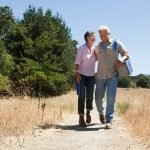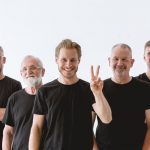Going Public: Will There Ever Be a Naturopathic Medical Program at a Public University?
FRASER SMITH, MATD, ND
The network of naturopathic programs in North America has grown and changed over the years. One thing they have all had in common is that they are, or were, within a private, post-secondary educational institution. That has worked out pretty well. Our profession has developed excellence in education specifically geared towards naturopathic medical practice preparation. Our programs and the institutions that house them are accredited at the programmatic and institutional levels (See my article from last month’s issue of NDNR for a more detailed discussion on that topic). What would happen if at least one naturopathic medical program was at a publicly funded university in a US state or Canadian province? Would there be anything to gain? Would it help us expand? Are there risks or downsides? What would be the obstacles to this happening?
Public universities benefit from some degree of state or provincial government funding. Although, in the United States, this funding has declined in many places and is being replaced by tuition increases.1 The tuition escalation is less pronounced in Canada. Nevertheless, many things that make for a full educational experience are already in place within a public university. In contrast, a private university must rely on tuition, investment income, and donations as the sources of revenue for creating their educational experiences.
Economies of Scale
If a naturopathic program can be one of many programs available on a public university campus, there are resources available that are shared amongst many programs and departments. An advantage of offering naturopathic medicine at a larger public university would be the sheer number of faculty members with doctoral degrees. Many of these faculty members could contribute to the delivery of the naturopathic program with costs shared among other programs. Certain constants, such as benefits, are already paid for within the school’s budget. Accessing genetics, immunology, and pathology experts for naturopathic medicine education would be a dream come true for program development. Although not all public university faculty would be available for a naturopathic program, there would be a larger pool of great faculty members to choose from.
Other areas where a naturopathic degree program could plug into existing resources would be:
- Student support services
- Financial aid
- Campus safety
- Technology
- Libraries and/or research facilities
- Learning resources
- Residential dormitory space
- Career counseling
- Interprofessional education coordinators
- Diversity and inclusion officers
These facilities and departments are staffed with capable, knowledgeable, and student-friendly people. Our naturopathic institutions have built these resources for themselves. It would be a bonus to have such assets already funded and present, and easily able to accommodate the (likely) relatively small number of naturopathic students.
Research Power
When we consider our naturopathic medical programs and the institutions that house them, one of the many things that we can be proud of are the fine research departments that have grown up along with the schools. A community of highly trained and accomplished researchers have produced a growing body of evidence-based work. They also mentor students and create curricula that connects students with developing critical research skills. Though we can be proud of these efforts, the scope of these departments is often limited due to size and funding for individual studies.
On the other hand, a public university typically has many large research projects proceeding concurrently, with thousands of graduate students participating at all levels of data collection and analysis. An entire brigade of Primary Investigators (PIs) can apply for, and be awarded, research grant money. Access and proximity to PIs could present opportunities for naturopathic students who want to assist in research or enter a research track. The naturopathic medicine faculty could also benefit from a campus with a research culture by getting support for study design, grant writing, and participant recruitment, thus improving research that is specific to our field.
We must also consider the downsides of research in a public university setting. Grant-funded researchers can be protective of the cash flow coming into their groups. There is competition, and in some cases, ill-will. A new and unestablished naturopathic faculty might discover that some of the established research leaders won’t want to share the pie with newcomers. However, since the research questions we posit and the solutions to poor health that we evaluate can be quite different than many standard research lines, it might not be such a zero-sum game. It may even be the case that the right institution would benefit from even more grant money by incorporating naturopathic medicine into their curriculum.
Not On My Campus
One unfortunate reality is that in large, research-based universities, there could be people who simply dislike, or categorically reject, any type of medicine they perceive as not being “science-based.” Sometimes this has to do with their reaction to some aspects of naturopathic medicine, such as homeopathy. The tone can be akin to, “We don’t want any pseudoscience in these hallowed halls.” Or, they may take a different approach and say, “Well, nutrition is fine, but we already have people who study that. Why do we need these naturopaths around doing the same thing?”
I suspect that for some, even if they can’t fully articulate it, the presence of a different model of healthcare gives them the heebie-jeebies (for which there is no DSM-V definition). Naturopathic medicine represents a model that seeks to address chronic suffering and treat acute illness. It also looks at enhancing homeostatic pathways and eliminating disturbances to the determinants of health. That seems like the least provocative stance to those of us who have seen it work, but for those who truly feel that good science can only support the use of pharmaceutical medicines, surgery, and broad public health measures, our whole-person approach can seem like a sham.
An illustrative example of this can be found in the world of chiropractic education. While there are certainly differences between naturopathic and chiropractic medicine and their respective professional bodies, there are similarities. Both are trained to be first-contact doctors and emphasize therapies that build up health. Both also operate on a model of making the flame of health burn brighter (eg, by removing obstacles to cure).
In late 2004, the governing board of Florida State University rejected a proposal to bring a chiropractic medicine program into their university. The following abstract, published in the journal, Science, tells the story well:
Florida’s Board of Governors has killed a proposal to set up a chiropractic school at Florida State University (FSU). The board’s 10-3 vote last week against the proposal, developed by FSU after the state legislature endorsed a $9-million-a-year spending plan, caps months of protests by faculty members who viewed the school as a threat to the university’s scientific reputation. “There’s no way that the program can now be resurrected,” says FSU Provost Lawrence Abele. “I’m glad we don’t have to drag the faculty through a long and protracted discussion over the scientific merits of chiropractics [sic],” he says. Before voting, board members said they expected that a new private college near Daytona Beach would produce more chiropractors than Florida needs. The board’s decision comes as a “big relief,” says Raymond Bellamy, director for surgery at FSU’s Tallahassee campus, who helped organize faculty opposition. Besides hurting FSU’s standing as a research university, he says, the proposed school “would have been a horrible waste of taxpayer money.”2
This summary tells the story well and is loaded with just about every reason or excuse not to bring an integrative profession into a public university system (perhaps they could have added “and we’ll have to print more business cards for all those new faculty”). It reveals the fact that there is a sense that some “non-conventional” doctors would somehow tarnish the scientific reputation of a university. As Dr. David Schleich has explained – so precisely in this column in the past – naturopathic medicine falls into the category of “Professionalized Heterodox Medical Systems” (using the nomenclature of Hans Baer).3 Medical doctors (and Osteopathic doctors) represent the “Orthodox” system. Just how real these hierarchies and divisions are can only be made clear when we challenge them.
Rays of Hope
A very large public university currently has naturopathic medical services integrated into one of its medical centers. The Susan Samueli Integrative Health Institute at the University of California at Irvine is a well-supported, financially successful integrative medicine enterprise. The Samueli Institute’s mission is stated as:
To transform healthcare through the practice of integrative health by conducting rigorous research, promoting evidence-based treatment modalities, educating the public on wellbeing practices, providing individualized, patient-centered clinical care and providing services to the community that focus on obtaining optimal health.4
There is a strong and visible naturopathic medicine presence at the Samueli Institute. This includes patient care, research, and education. There are no less than 7 naturopathic physicians on staff, ensconced in an integrative setting with many other disciplines.5 Dr. Arvin Jenab, a naturopathic physician, was also brought on as naturopathic medical director and residency director.6
Perpetual Evolution
Our profession and our world continues to change. Naturopathic colleges, physicians, and agencies have worked hard to find ways to articulate a researchable, adequately theorized, and rational basis for our medicine. At the same time, we’ve endeavored to keep all of it based on a firm footing of naturopathic principles and philosophy. None of us likely have the desire to disregard the vast repository of traditional, indigenous, global healing methods that constitute (at least in-part) our history simply because they may irk someone. If no one champions these practices, however, they won’t get the research funding they need and deserve. If we allow lazy arguments such as, “There’s no point in studying that, we already know it won’t work (because it’s weird)” to go unchallenged, we will never fulfill our potential as a profession. Fortunately, great work that walks this line happens all the time, showcased in peer-reviewed journals, at our conferences, and in vital trade publications such as NDNR.
In the case of the Samueli Institute, we have an example of naturopathic medical practice, teaching, and research within a public university. Naturopathic physicians employed by the center perform all of these roles, and in a highly regarded research university. The proof of concept for CNME accreditation in a public university is already here. We’ve secured the beachhead, and now we need to take the fight to the countryside. Our profession, dynamic, honorable, and potent, never ceases to amaze me
References:
- Marcus J. Most Americans don’t realize state funding for higher ed fell by billions. February 26, 2019. PBS NewsHour. Available at: https://www.pbs.org/newshour/education/most-americans-dont-realize-state-funding-for-higher-ed-fell-by-billions. Accessed December 28, 2021.
- Bhattacharjee, Y. Florida Rejects Chiropractic Program. Science. 2005;307(5710):655.
- Schleich D. Plus ça Change. NDNR. July; 2019. Available at: https://ndnr.com/pain-medicine/plus-ca-change/. Accessed December 31, 2021.
- UCI Susan Samueli Integrative Health Institute. About Us. Available at: https://ssihi.uci.edu/about-us/. Accessed December 31, 2021.
- UCI Susan Samueli Integrative Health Institute. Naturaopthic Medicine. Available at: https://ssihi.uci.edu/services/naturopathic-medicine/. Accessed December 31, 2021.
6. Association of Accredited Naturopathic Medical Colleges. Naturopathic Doctors as Part of the Health Care Team. March13, 2020. AANMC. AANMC Web site: https://aanmc.org/featured-articles/interprofessional-healthcare/. Accessed December 31, 2021.

Fraser Smith, MATD, ND is Assistant Dean of Naturopathic Medicine and Professor at the National University of Health Sciences (NUHS) in Lombard, IL. Prior to working at NUHS, he served as Dean of Naturopathic Medicine at the Canadian College of Naturopathic Medicine (CCNM) in Toronto, Ontario. Dr. Smith is a licensed naturopathic physician and graduate of CCNM.










